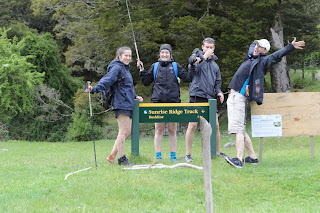This week I was privileged enough to watch an elective orthopaedic surgery. It was a total hip joint replacement. Watching this surgery completed the clinical picture in my mind / the clinical pathway from treating patients with disabling OA hip, their surgery, the immediate post-operative phase and rehabilitation after discharge. I was pleasantly surprised how happy the orthopaedic surgeon and the patient were for me to observe the surgery. In fact, the whole experience was incredible. I was a fly on the wall through the pre-op formalities - admission and welcoming them to the day stay / inpatients service, including taking baseline readings, getting them appropriately dressed and comfortable until they are seen by the anesthetist assistant, and then from the registrar or consultant/surgeon. They are then shown the way to a waiting room next to the operating theatre (OT) until the OT is ready. As a student observing a surgery, I also had to wear scrubs/hat/mask - so I was shown where to get suited up. The OT is quite a large room with the equipment you have probably seen on TV medical programmes / movies. The anesthetist had his playlist going "I shot the sheriff, but I did not shoot the deputy....", there were computer screens with the patient's x-rays (the registrar talked me through the interesting features), I put my name up on the whiteboard as an 'other' in attendance for the surgery (followed by introductions to other staff; one funny moment happened after the surgery with a nurse helping with the clean up, 'you should tell the surgeon to be quieter and less messy'... as he went about cleaning the blood off the overhead lights). I had a great learning experience during the surgery; although I wasn't able to assist, the surgeon had me standing on a stool overlooking the action, stopping to show me muscles & explain the procedure (like measuring the right leg length). Points of interest were the very warm concrete put into the shaft of the femur, the dislocation of the hip technique itself and of course the range of instruments used to get the job done (including a mallet... bang, bang, bang...). I watched a second surgery afterward, the removal of screws in the metatarsal-phlangeal joint, and the insertion of a plate to stabilise the joint.
We had an in-service presentation on dynamic taping as a rehabilitation aid for hand-therapy and MSK physio ailments. Dynamic taping is not kinesio-tape or rock-tape, it's a different type of taping... but I would still consider it to sit under the umbrella of 'therapeutic adjunct', of which k-tape and rock-tape fall under. The texture of dynamic tape feels similar to some togs - a joke was made that it might actually improve performance through its streamline feel rather than its suggested musculoskeletal altering properties. This tape also comes in different widths and resistances to stretch. It can be 'doubled up' with a second piece of dynamic tape. An interesting concept, but I'm not convinced (yet).
I would consider Nelson to have that 'small town' feel, that walk down the street and see a familiar face sort of place. What better place, to see a familiar face, than at the grocery store. I happened to make eye contact accompanied by a 'where have I seen that familiar face before?-kind-of "hello"' which started a conversation with a person who I treated in MSK outpatients on a previous placement. They volunteered information about how well their neck had improved (which I was quietly curious about) then going on to tell me about how they were shifting to Christchurch at the end of the month.



No comments:
Post a Comment